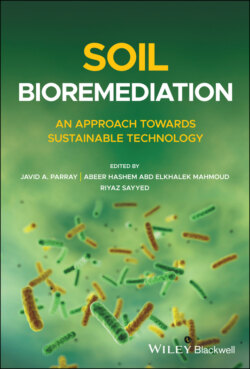Читать книгу Soil Bioremediation - Группа авторов - Страница 38
2.6.1.3 Hydrolysis
ОглавлениеHydrolysis is the most thoroughly studied degradation pathway for organophosphorus pesticides. The organophosphorus pesticide can be diverse and usually involves the cleavage of bonds, which produce the best product. A good example of bond cleavage can be found in the hydrolysis of diazinon, where the oxygen attached to the pyrimidine ring can most effectively stabilize the negative charge and similar behavior can be found for other phosphorothioates as well. During the hydrolysis of dichlorvos, the possible initial hydrolytic cleavage lies between the P and O atoms attached to the carbon atom of the double bond. Alkaline hydrolysis is the major pathway for malathion and is consistent with previous laboratory studies. It has been observed that only the biological and photochemical degradation of malathion is slow, further the biodegradation is important for parathion. Alkaline hydrolysis and photolysis are only minor ways of degrading parathion. Digestion mechanisms include copper‐catalyzed chlorpyrifos hydrolysis. P. putida can use parathionmethyl as the sole source for C and/or P. Bacteria producing enzyme, the organophosphoric anhydrase, which hydrolyzes parathionmethyl to p‐nitrophenol, further degrades to hydroquinone and 1, 2, 4‐benzenetriol and then cleaves to acetic acid by glycerol oxygenase [126, 129, 130].
